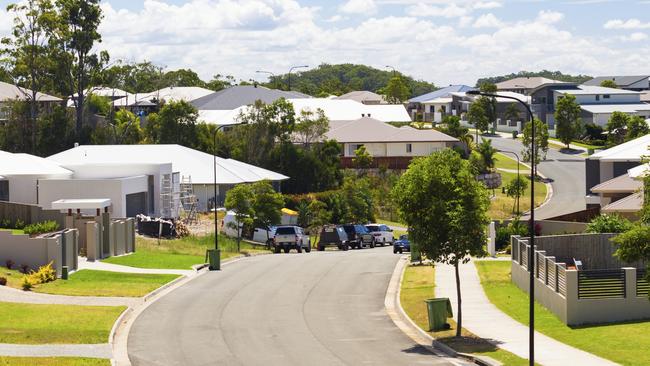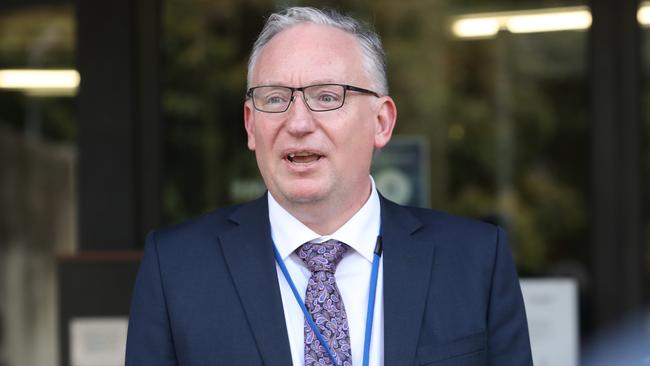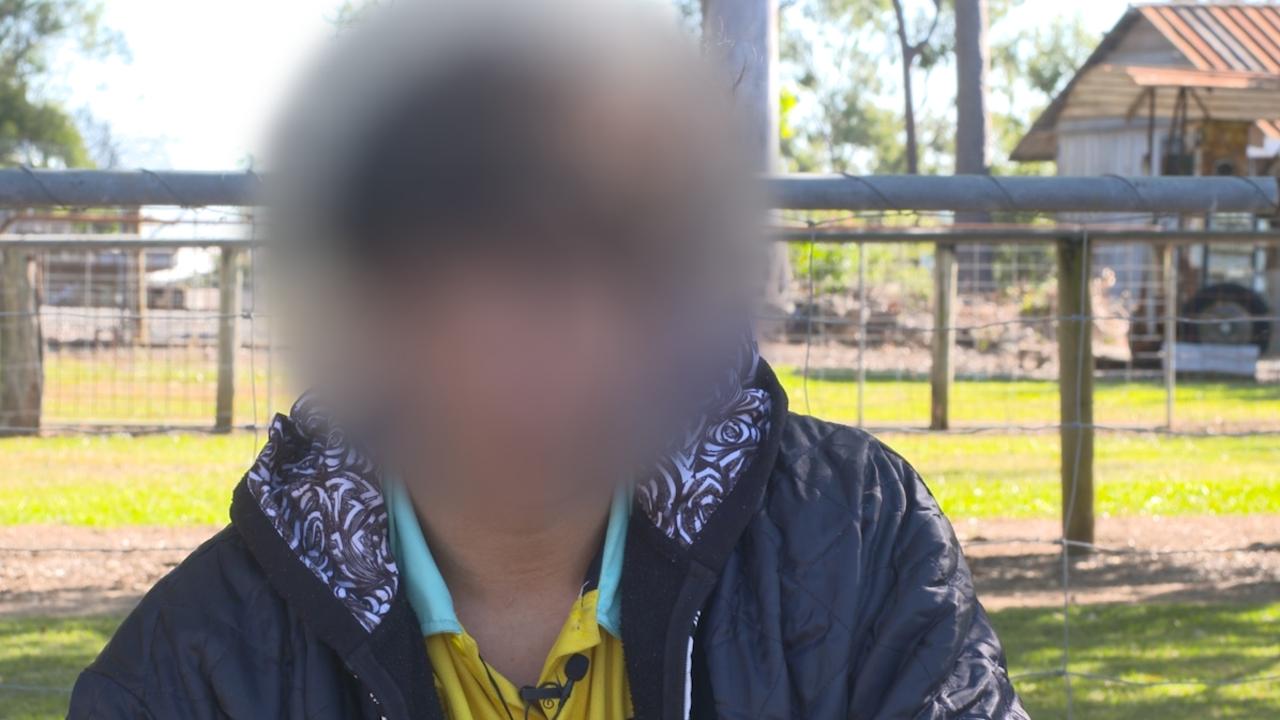Andrews government’s housing planning reforms explained
The state government has announced major changes to housing planning. Here’s what the reforms mean for builders, future homebuyers, renters, landlords, tourism providers and others.

News
Don't miss out on the headlines from News. Followed categories will be added to My News.
The Andrews government has announced sweeping changes to planning across Victoria in a bid to build an extra 800,000 new homes over a decade and help fix the state’s housing crisis.
Here’s what’s being proposed and what it may mean for prospective homeowners, renters, landlords, developers, builders and tradies, short-term accommodation providers, grandparents and others.
What is being introduced?
> Planning permits scrapped for single dwellings on larger blocks
> Government land unlocked for developers if they include a portion of affordable housing
> Government “surplus” land released for medium density projects in key locations such as along rail lines, as long as they include 10 per cent of social or affordable homes
> No permits required for granny flat or home office buildings on larger blocks
> A crackdown on landlords increasing rent and on real estate agents breaking the law
> A 7.5 per cent tax on short stay accommodation like Airbnbs
> The Victorian Homebuyer Fund boosted by $500m
> New state-run planning controls for developments around jobs hubs

I’m a prospective homebuyer, is it good for me?
Master Builders Victoria chief Michaela Lihou has said the housing planning changes are one of the most significant steps toward addressing demand as more housing will become available in more areas both in Melbourne and its suburbs, and across regional Victoria.
Property Council Victorian executive director Cath Evans said the “ambitious and comprehensive plan” would “supercharge” the delivery of housing in Victoria by helping to clear growing planning backlogs with local government and other approval authorities.
“The Property Council has identified around 35,000 dwellings currently stuck in the planning pipeline – 35,000 homes that could be housing Victorians and placing downward pressure on affordability,” she said.
“Tying affordable housing requirements to eligibility for the program will enable the private sector to mobilise and deliver affordable housing outcomes for a broad cross-section of the community.”
Where will new housing and estates open up?
The government has identified priority precincts at Arden, Docklands, Fishermans Bend, Footscray, East Werribee, Parkville and Sunshine.
Planning minister Sonya Kilkenny has already approved planning permissions for five major developments which will see more than 2000 homes delivered. This includes 800 homes in Dingley Village, 480 homes in Preston, 477 homes in Kensington, 300 homes in Hawthorn and 37 homes in Geelong. The sites include a former University of Melbourne site at Bills St, Hawthorn, and the former Kingswood Golf Course in Dingley Village.
I’m a renter will be it be good for me?
The promised crackdown on landlords increasing rent and on real estate agents breaking the law looks positive for renters — some of whom who have seen their rents rise unexpectedly and by unreasonable amounts in recent times.
The minimum period for notices to vacate will increase from 60 to 90 days.
Landlords will also be barred from increasing rents for new tenants within a 12-month window of issuing a notice to vacate to previous tenants.
The state government has said the changes are aimed at stopping landlords churning through renters and giving tenants more certainty.
However, Victorian Greens leader Samantha Ratnam said there was a lack of meaningful protections for struggling renters, and that “closing a single loophole” meant next to nothing when a landlord was still free to increase rent as high as they wanted.
“It’s pretty meaningless to prevent a landlord from kicking out a tenant to raise the rent when they are still allowed to raise the rent as high as they like in order to force them out,” she said. The Greens have consistently called for a rent freeze and caps.
What does it mean for social housing in the state?
Victorian Public Tenants Association chief Katelyn Butterss believes the reforms are a groundbreaking step towards increasing critical social housing supply to support some of the state’s most vulnerable people, but has urged the government to be transparent regarding who will ultimately manage properties, “in order for this announcement to be as positive as it seems on the surface”.
“Ensuring these new high-rises are public-owned and publicly managed is absolutely imperative,” she said.
“As the peak body for people in public housing, we are seeing more and more people requiring our advocacy and assistance as a result of poorly managed issues in the community housing space. We are calling on the government to commit to ensuring all new homes on the existing sties to be publicly owned and managed social or affordable housing. If not, this will unfortunately be a missed opportunity to supply enough of the safe and accessible, public housing Victorians deserve.”
However, Council to Homeless Persons chief Deborah Di Natale said the government had missed a “critical opportunity” to tackle the housing crisis.
Ms Di Natale said the government had failed to commit to building “desperately needed” social housing.
“Behind the big headline numbers, there’s crumbs for social housing,” she said.
“We need at least 60,000 new public and community homes to be built in Victoria over a decade. Unfortunately there’s nothing like that in these announcements.”
Meanwhile, Victorian Greens leader Samantha Ratnam said the government appeared to be laying the groundwork for ending public housing in Victoria.
“With plans to sell off large swathes of public housing land to private property developers as part of the plan to rebuild the 44 public housing towers, today could well actually be marking the beginning of the end of public housing in Victoria,” she said.
“If Labor really wanted to help renters today, rather than tinkering around the edges they would have announced a two year rent freeze, followed by a permanent cap on rent increases.”
What if I’m a landlord?
Restrictions on landlords upping rents have been slammed by industry group Real Estate Institute of Victoria (REIV).
Such a change could result in “untold damage to an already fragile rental market”, REIV chief Quentin Kilian has previously said.
“The result will be an increased and sizeable departure of rental providers, leading to much less rental stock available, much higher prices and more homelessness,” he has warned.
Currently, Victorian landlords can increase rents once every 12 months and renters can challenge increases if they believe they are too high.
How may the changes be good for Victorian developers, builders and tradies?
State-significant developments worth $50m in metropolitan areas or $15m in regional towns will be fast-tracked if affordable housing is included, with third party appeals scrapped.
The government will also significantly expand a state pilot program called Future Homes, which is aimed at streamlining apartment block developments within 400m of a railway station or activity centre. Developers can choose from four designs that are adapted to specific sites, and are supposed to cut planning approval processes in half.
More new home builds will obviously result in more work for Victorian builders and tradies.

Master Builders Victoria chief Michaela Lihou said the state government’s ambitious plan to build 80,000 homes a year – 800,000 across the next decade – was a vote of confidence for Victoria’s builders and a solid pathway ahead for the industry.
A strategy to clear planning backlog, immediate legislative changes to cut red tape and a push toward streamlined planning via an expanded development facilitation program were measures welcomed by builders, Ms Lihou said.
Executive director of HIA Victoria, Keith Ryan, said the Housing Statement was definitely “a step in the right direction”, with immediate action to respond to the backlog of planning applications, streamline the planning process for medium to high density residential developments, and changes to minimise the need for planning permits for houses that met specified standards.
“The government has indicated single dwellings on lots bigger than 300 square metres, and not covered by an overlay, will no longer require a planning permit. Single dwellings on lots smaller than 300 square metres, where an overlay doesn’t exist, will be approved within 10 days and there will be more permit exemptions for single dwellings for things like extensions to sheds and carports,” he said.
“Taken together, these changes will help some delayed projects proceed, reduce the backlog of existing planning permit applications, and help get more residential building work to market sooner … HIA is pleased the government recognises that greenfield growth areas will continue to be an attractive choice for many households.”
Urban Development Institute of Australia, Victoria chief Linda Allison, said the “overdue” planning reforms would send a “confidence signal” to industry, predicting faster approvals and a prioritisation of development around hot spots.
“Untangling planning red tape is an important step to getting projects moving to deliver much-needed homes for Victorian families,” Ms Allison said.
But she noted the reforms did not address taxation, construction costs and labour shortages.
“We know that the Victorian taxation system is currently an obstacle to investment, and many projects need investors to get them out of the ground, not just owner-occupiers,” she said.
“We need to remove barriers to investment like the foreign purchaser additional duty to deliver the homes Victorians need.”
I have an Airbnb, how will it affect me, and tourists?
A much anticipated tax on short stay accommodation will see a 7.5 per cent levy paid by booking platforms diverted to a dedicated social housing fund, with 25 per cent of that earmarked for regional Victoria.
Stayz senior director of government and corporate affairs, Eacham Curry, has previously said imposing such a levy would be “ill conceived” and “does not represent the best or most equitable way to address concerns around the impact of short-term accommodation”.
Victorian Tourism Industry Council chief executive Felicia Mariani has described the move as a “flawed”.
“Asking consumers to pay more for their holiday rental won’t magically increase housing supply. This policy will not encourage property owners to take their houses off Airbnb and return them to the long term rental market,” she said.
“What the Victorian government is proposing is not a tax on short-stay platforms or property owners, it’s a tax on consumers who rent those properties.”
I want to build a granny flat or studio office on my block, is it good for me?
In a word yes. No permits will be required for granny flat or studio-style home office buildings on larger blocks. However, granny flats are cause for consternation for some councils areas, with Mornington Peninsula Shire previously expressing concern over an apparent increase in landowners putting up granny flats as essentially second homes or to rent out — without putting their granny in them. In a March 2021 submission to the state government the council expressed concerns about secondary dwellings being used for short stay accommodation rather than dependent family members.
What has been the reaction to the planned reforms?
Libertarian MP for South East Metropolitan David Limbrick, who led the state government inquiry into stamp duty earlier this year, said the reforms would do little to ease the housing crisis.

“There are two main ways governments can make housing affordable – one is to ease land restrictions and the other is to stop taxing people tens of thousands of dollars just to buy a home,” he said.
“The government has done a little bit of the first thing, but none of the second thing.”
Mr Limbrick called on the government to immediately cut stamp duty.
“Avocado on toast is not the problem, nor is it landlords or Airbnbs – the government needs to get its own house in order.”




